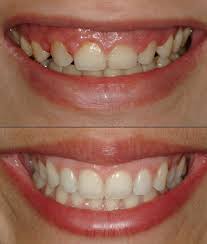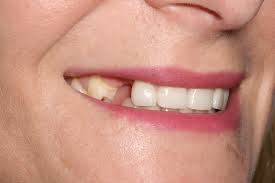Header logo
header top contact widget
periodontal plastic surgery
Reshaping Gum Tissues Can Greatly Improve Smile’s Appearance
Posted on Jun 07, 2017 by William J. Claiborne, DDS MS
As a Periodontist, I have advanced training and skills in the placement of Dental Implants and treating all stages of periodontal (gum) disease. Another realm of the periodontal specialty is in the recontouring of gum tissues, referred to as Periodontal Plastic Surgery.
While the shape, shade and length of teeth have a major impact on the appearance of a smile, so does the gum tissues that frame each tooth. The uniformity of gum tissues creates an appealing balance of gums to teeth. Thus, the appearance of your smile is greatly affected by the appearance of teeth and their ‘frames’ of gum tissue.
There are several ways that gum reshaping can have a dramatic impact on a smile’s appearance. Gum reshaping is recommended when certain teeth are bordered by more gum tissue than that which borders surrounding teeth. The procedure to correct this is crown lengthening, which is usually done in conjunction with crown placement.
Crown lengthening provides an appealing, balanced smile line that ‘frames’ each tooth with an arch similar to that over adjoining teeth. The procedure requires just one visit and healing time is generally minimal.
However, crown lengthening may also be performed to save a tooth from removal. For example, when a tooth has broken close to the gum line, crown lengthening procedures can remove gum tissue to expose more of the tooth. Because a tooth that breaks at the gum line must be removed, this procedure can make sufficient tooth structure available to support a crown.
Crown lengthening is also beneficial in sealing gum tissues surrounding a tooth at its base. This is important after a new crown is placed as it prevents bacteria from penetrating the gums during the vulnerable stage of attaching. By securing the gum tissue around the crown, bacterial entry is avoided and the risk for periodontal (gum) disease decreased.
Another way that Periodontal Plastic Surgery can enhance both the health and appearance of a smile is grafting to repair gum recession. This is when the gum tissue pulls away from the base of the tooth, exposing darker, more sensitive tooth root sections. Causes of receded gums are often due to age, bite misalignment, gum disease and over-zealous brushing.
Also referred to as Gingival Grafting, this procedure typically involves taking a small area of tissue from the roof of your mouth (which heals quickly) and placing it over the area of recession. It is secured in place for a healing period of approximately two weeks. The results restore the look of a healthy, naturally-framed tooth.
For those who are born with a ‘gummy smile,’ gum reshaping can restore the balance of gums to teeth for a more appealing smile. In a gummy smile, too much gum tissue is exposed above the teeth most visible in a smile. This is a genetic trait and doesn’t affect one’s oral health. However, many who have this particular smile trait feel self-conscious when they smile and tend to hold back from smiling fully.
The procedure to correct a gummy smile is a gingivectomy and can be done in one visit. Excess gum tissue is removed and the remaining gums are shaped to arch over each tooth for a natural appearance. In most cases, porcelain crowns or veneers are placed to accentuate the natural look and feel of the teeth involved.
A Periodontal Specialist provides you with advanced skills for these procedures. He or she also understands the delicate touch needed for minimal disruption to the gums involved in treatment. This tender tissue requires precision care to provide exceptional results with minimal healing time needed.
If Periodontal Plastic Surgery could improve the appearance and health of your smile, call 828-274-9440 to schedule a consultation appointment. During this time, we can discuss the options that would work best for your needs.
Best To Replace Tooth With Dental Implant Promptly After Removal
Posted on Mar 23, 2017 by William J. Claiborne, DDS MS
Even with the best of care, a tooth needs to be removed. Removal may be necessary because of an injury or break that extends below the gum line. Occasionally, removal is necessary when a tooth needs repair beyond what a crown can provide. When it is necessary to remove a tooth, there are several reasons to replace it immediately.
For many people, appearance is an important reason for placing an implant and crown right after tooth removal. Immediate replacement means they can avoid having an awkward and embarrassing gap in their smile. More importantly, however, is making sure that neighboring teeth are kept in their proper positions.
When an open area exists, the teeth on either side and the one above (or below) no longer have their reinforcement. The teeth on each side will tilt inward to the open area and the tooth above will grow longer. This begins a process of bite misalignment.
The delicate balance of upper to lower teeth is vital to your oral health, and beyond. A misaligned bite leads to cracked, broken, fractured or chipped teeth. Because an improper bite places strain on the jaw joints (TMJ), it can lead to frequent headaches, migraines, worn teeth (from grinding or ‘bruxing’), sore or popping jaw joints, difficulty opening the mouth fully, ear ringing, dizziness and sore facial muscles.
Before other teeth can move, it is wise to replace the tooth. As a lasting solution to a missing tooth, many adults choose to replace it with a dental implant immediately following removal. In addition to helping neighboring teeth hold their proper positions, another advantage is the prevention of bone loss. By inserting an implant immediately after a tooth is removed, you minimize the risk of bone loss, or ‘resorption.’
The process of resorption is when a tooth root is no longer present in the jaw bone. Because tooth roots stimulate and nurture the bone, their absence leads to bone shrinkage over time. The declining foundation of bone places adjacent teeth at the greatest risk of being the next to be lost. This tends to set off a domino effect. Statistics show that the next tooth you’ll lose will be the next tooth in line.
Another benefit of immediate implant placement is the preservation of natural gum contours. Within days of having a tooth removed, the natural arch of gum tissue and the ‘points’ of gum tissue that dips between the top of each tooth will start to flatten. Placing an implant promptly following tooth removal helps to preserve the natural contours of your gum tissues. And the gums provide a natural frame for teeth, offering both esthetic appeal and protection.
Immediate replacement is also beneficial when two (or several) teeth in a row are missing. Because implant treatment fees are largely based on the number of implants placed, having one implant support a bridge of teeth saves you money while also preserving natural gum contours.
Additionally, since the positions for an implant (depth, angle, etc.) in your jaw bone is already at proper dimensions, placing an implant following removal greatly simplifies treatment time, healing and procedural requirements.
To discuss immediate placement implants or any type of dental implant, call 828-274-9440. As a Periodontist, I have advanced training and skills in the diagnosis and placement of all types of implant systems. Begin with a consultation to discuss the implant best for your needs, the implant process and associated fees.
Individualized Care For Unique Patient Needs
Posted on Jan 25, 2017 by William J. Claiborne, DDS MS
I once heard the term, “not everything fits into a box.” I agree. While this may be related to the phrase, “think outside the box,” it reminds me of how we approach patient care.
As a Periodontist, my specialty includes treating all levels of periodontal (gum) disease, reshaping gum tissues, and the diagnosis and placement of dental implants. Summed up, however, I restore smiles to a healthy, confident state. This is why I love what I do.
In our office, we only exist because of our patients. That’s where our commitment lies and is the foundation for every decision we make. This is also why we look at each patient’s needs individually. No two mouths are alike and no two patients are alike.
As far as gum disease goes, there are various stages that require different approaches in order to effectively treat it. Although some individuals may have similar stages of gum disease as others, certain factors must be considered as the most appropriate treatment is determined.
In addition to their existing level of gum disease, we take into account the patient’s age, medical and dental history, their current medications, and number of remaining teeth. We also consider any anxiety or fears associated with dental procedures.
Fear has been a major deterrent for many to receive regular dental care. This is why adults often end up with gum disease and tooth loss. By the time many arrive at my office, they are at a point where they have no other choice in order to rid their mouths of the infectious bacteria or replace missing teeth from to the destructive nature of gum disease.
To help anxious or fearful patients relax, we make sure we are communicating thoroughly. Our belief is that patients who are fully informed of their needs and the procedures required are more confident in proceeding with treatment. This, in turn, creates a patient who is able to relax and let fears go.
Some patients are unable to relax, however. This is why our office provides Oral or I.V. Sedation. Oral sedation is a pill form of relaxation. Although most patients have little or no memory of the procedure afterwards, this provides deep relaxation with a quick recovery.
I.V. sedation (also referred to a ‘twilight sleep’) is a deeper level of relaxation. This is an in-the-vein medication administered via a drip. Patients doze while their procedures are accomplished and have no memory of their treatment. Recovery time is longer but some patients are fine with that. Most are able to resume normally within 24 hours.
Regardless of the sedation chosen, patients are closely monitored by trained staff and advanced safety equipment. Your safety is as important to us as your comfort, so we ensure all measures are taken to provide both to optimal levels.
Please know that your procedure, comfort option, and individual needs are important to everyone in this office. We promise you’ll be respected, given exceptional care, and never over-treated or under-treated. We are here to help you regain the smile you desire.
Your oral health is a vital component of your overall health. Research has shown that the health of your gums and number of teeth directly correspond to a healthier you. Don’t delay care that you need, even if fear has prevented this in the past.
To begin, call 828-274-9440 and schedule a consultation appointment. During this time, we can discuss the treatments that may work best for your needs. I’ll explain comfort options and have our financial coordinator review payment options with you, if desired.
Reshaping Gums For Dramatic Improvements To Smile’s Appearance
Posted on Nov 07, 2016 by William J. Claiborne, DDS MS
When a Periodontist is mentioned, many people think the treatment we provide is dental implant placement and treating periodontal (gum) disease. However, another part of the periodontal specialty is reshaping gum tissues, known as periodontal plastic surgery.
In addition to the shape, shade and length of teeth, the gum tissue that surrounds teeth has a significant effect on the appearance of a smile. Think about a print you wish to hang on a wall. The matting and frame can have a tremendous role in how the print is displayed. Along the same lines, your teeth also rely on a balanced, properly-aligned amount of gum tissue, which is the frame around each tooth.
With unique expertise in the re-contouring of oral tissues, a periodontist offers several ways to improve a smile’s appearance.
Gum reshaping is often performed when certain teeth are bordered by more gum tissue than that bordering surrounding teeth. Crown lengthening is the procedure most commonly performed to correct this. This is usually done in conjunction with crown placement but may be possible in mild cases of excess gum tissue.
Crown lengthening creates an appealing, balanced smile line that frames each tooth with an arch that is balanced to that over adjoining teeth. This procedure typically requires only one visit with minimal healing time.
Another way that Periodontal Plastic Surgery can enhance the appearance of a smile is grafting to repair gum recession. Receded gums are the result of gum tissue that pulls away from the base of the tooth, exposing darker, more sensitive tooth root sections. Receded gums are often the result of age, bite misalignment, gum disease and too-rigorous tooth brushing.
Also referred to as Gingival Grafting, this procedure uses a small section of tissue from the roof of your mouth, which heals quickly. The section is placed over the receded area and allowed to heal (normally requiring only a week or two). The results restore the look of a healthy tooth with a natural gum arch.
Another example is repositioning gum tissues for those who are born with a Gummy Smile, or a gingivectomy. This creates a balance of gums to teeth for a more beautiful smile.
In a gummy smile, too much gum tissue is exposed above the teeth most visible in a smile. This causes many people to ‘hold back’ from smiling fully. Some with this trait smile with their lips only or conceal their smile with a hand.
The procedure to correct a gummy smile can be done in one visit. Excess gum tissue is removed and the remaining gums are arched over each tooth for a natural appearance. In most cases, porcelain crowns or veneers are placed to accentuate the natural look and feel of the teeth involved. The result is a fabulous smile that can be shared fully and joyfully!
The bonus of using a Periodontist to create an optimal outcome is the skill level needed to minimize disruption to the gums involved. Tender gum tissues heal faster and more predictably when the precision skills of a periodontal specialist incorporates their ability to tend gently and adeptly to each patient’s individual needs.
When it comes to your smile, your gum tissues are truly a significant part of its appearance. To improve the health and appearance of your smile, call 828-274-9440 for a consultation. During this time, I’ll gladly make recommendations and discuss specifics of each part of the process.
Recent Posts
Categories
Archives
- September 2024
- August 2024
- July 2024
- June 2024
- May 2024
- April 2024
- March 2024
- February 2024
- January 2024
- December 2023
- November 2023
- October 2023
- September 2023
- August 2023
- July 2023
- June 2023
- May 2023
- April 2023
- March 2023
- February 2023
- January 2023
- December 2022
- November 2022
- October 2022
- September 2022
- August 2022
- July 2022
- June 2022
- May 2022
- April 2022
- March 2022
- February 2022
- January 2022
- December 2021
- November 2021
- October 2021
- September 2021
- August 2021
- July 2021
- June 2021
- May 2021
- April 2021
- March 2021
- February 2021
- January 2021
- December 2020
- November 2020
- October 2020
- September 2020
- August 2020
- July 2020
- June 2020
- May 2020
- April 2020
- March 2020
- February 2020
- January 2020
- December 2019
- November 2019
- October 2019
- September 2019
- August 2019
- July 2019
- June 2019
- May 2019
- April 2019
- March 2019
- February 2019
- January 2019
- December 2018
- November 2018
- October 2018
- September 2018
- August 2018
- July 2018
- June 2018
- May 2018
- April 2018
- March 2018
- February 2018
- January 2018
- December 2017
- November 2017
- October 2017
- September 2017
- August 2017
- July 2017
- June 2017
- May 2017
- April 2017
- March 2017
- February 2017
- January 2017
- December 2016
- November 2016
- October 2016
- September 2016
- August 2016
- July 2016
- June 2016
- May 2016
- April 2016
- March 2016
- February 2016
- January 2016
- December 2015
- November 2015
- October 2015
- September 2015
- August 2015
- July 2015
- June 2015
- May 2015
- April 2015
- March 2015
- February 2015
- January 2015
- December 2014
- November 2014
- October 2014
- September 2014
- August 2014
- July 2014
- June 2014
- May 2014
- April 2014
- March 2014
- February 2014
- January 2014
- December 2013
- November 2013
- October 2013
- September 2013
- August 2013
- July 2013
- June 2013
- May 2013
- April 2013
- March 2013
- February 2013
- January 2013
- December 2012
- November 2012
- October 2012
- September 2012
- August 2012
- July 2012
- June 2012






